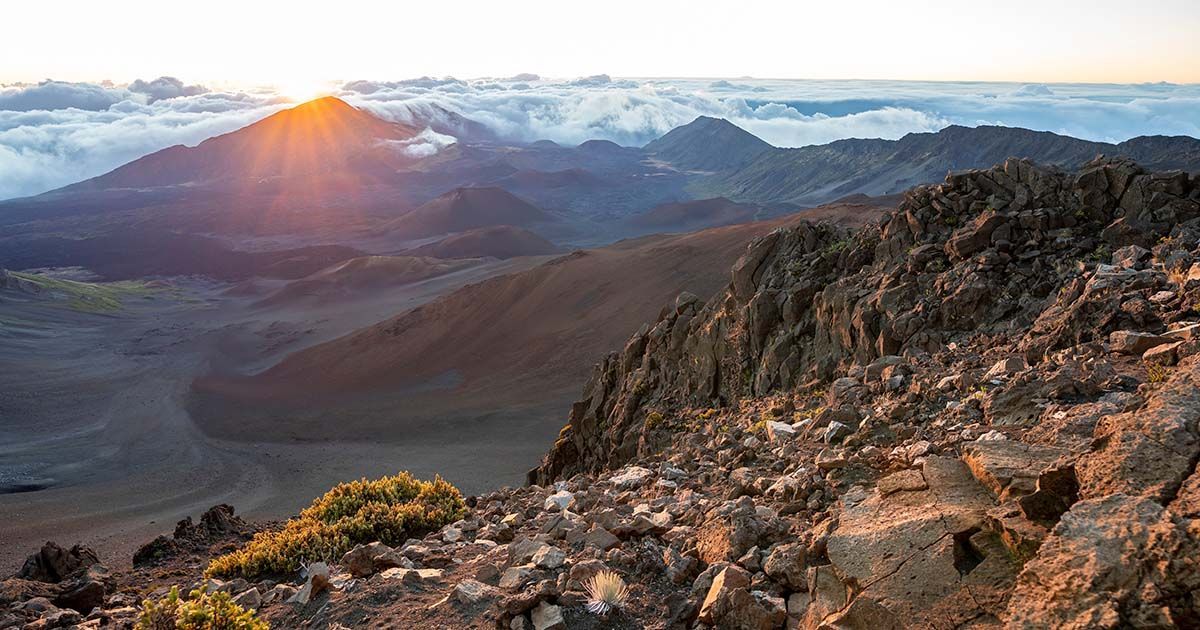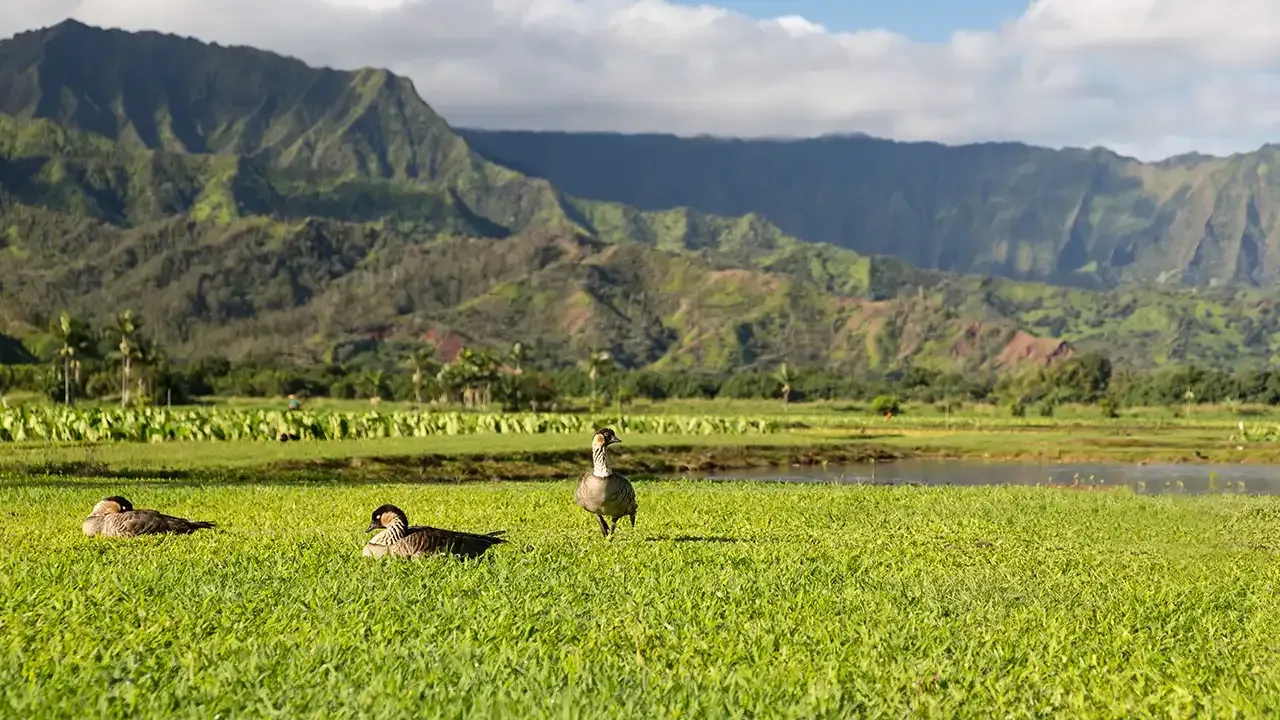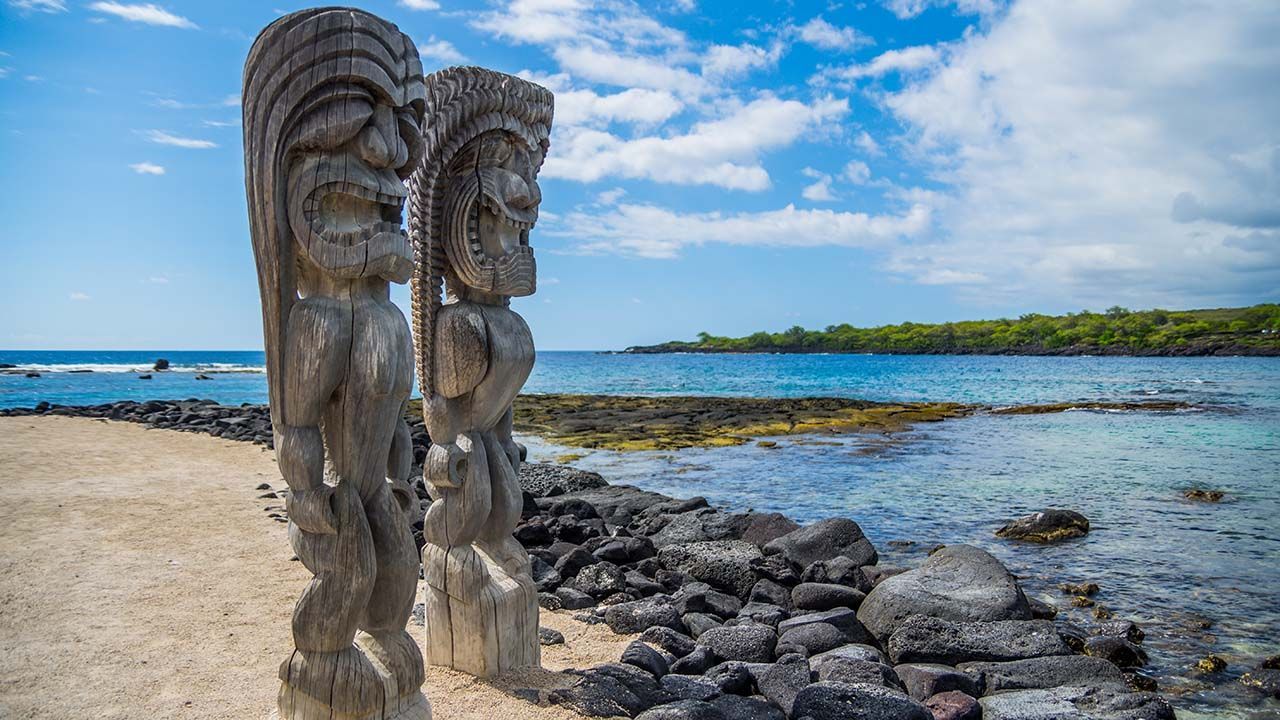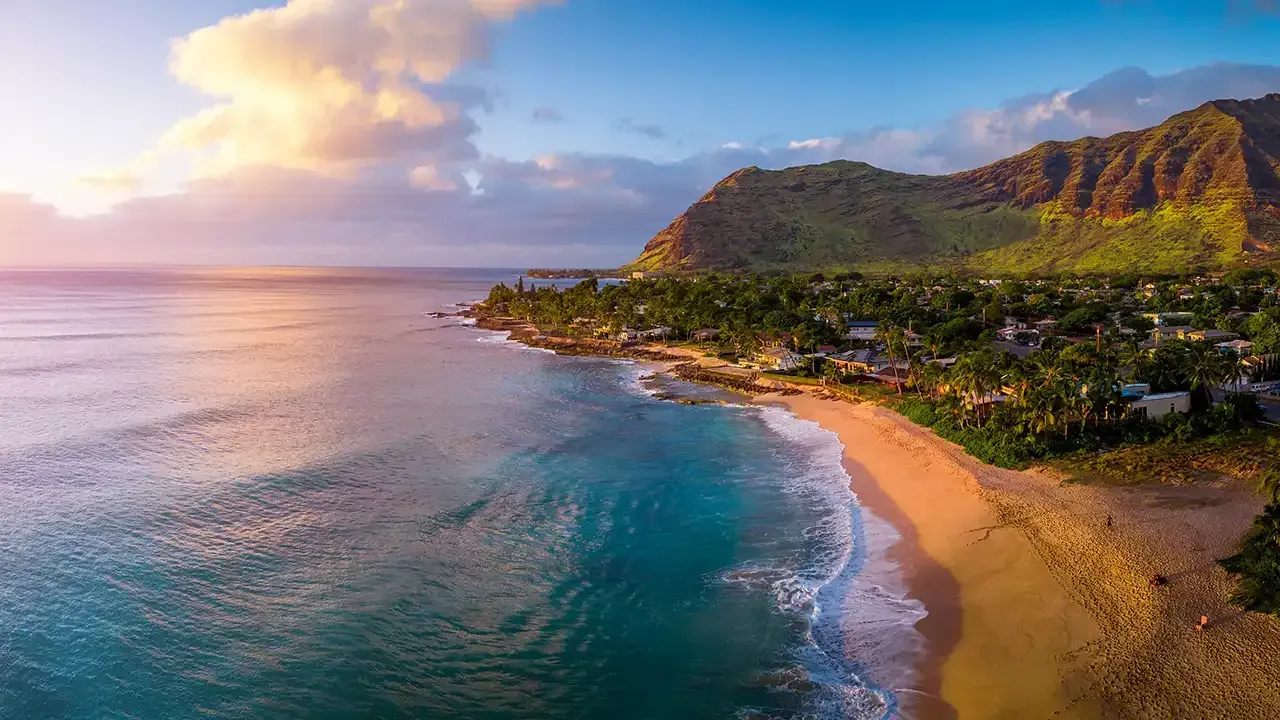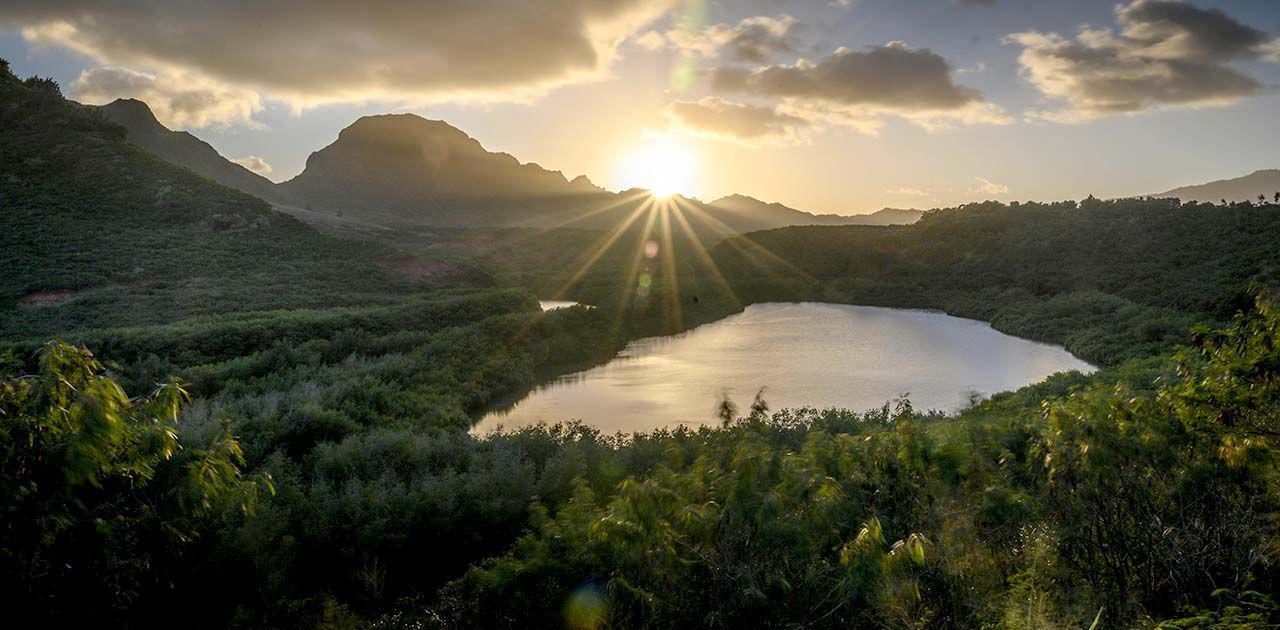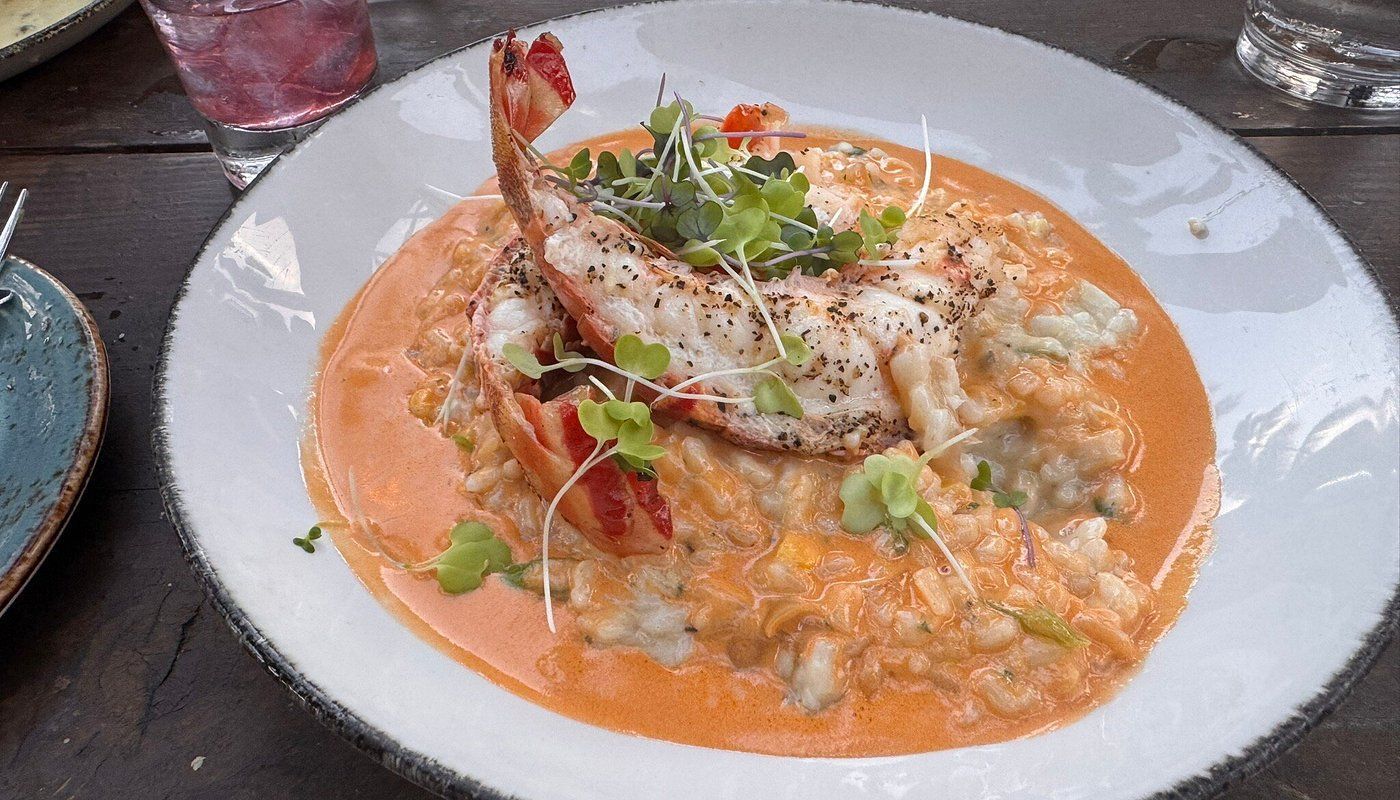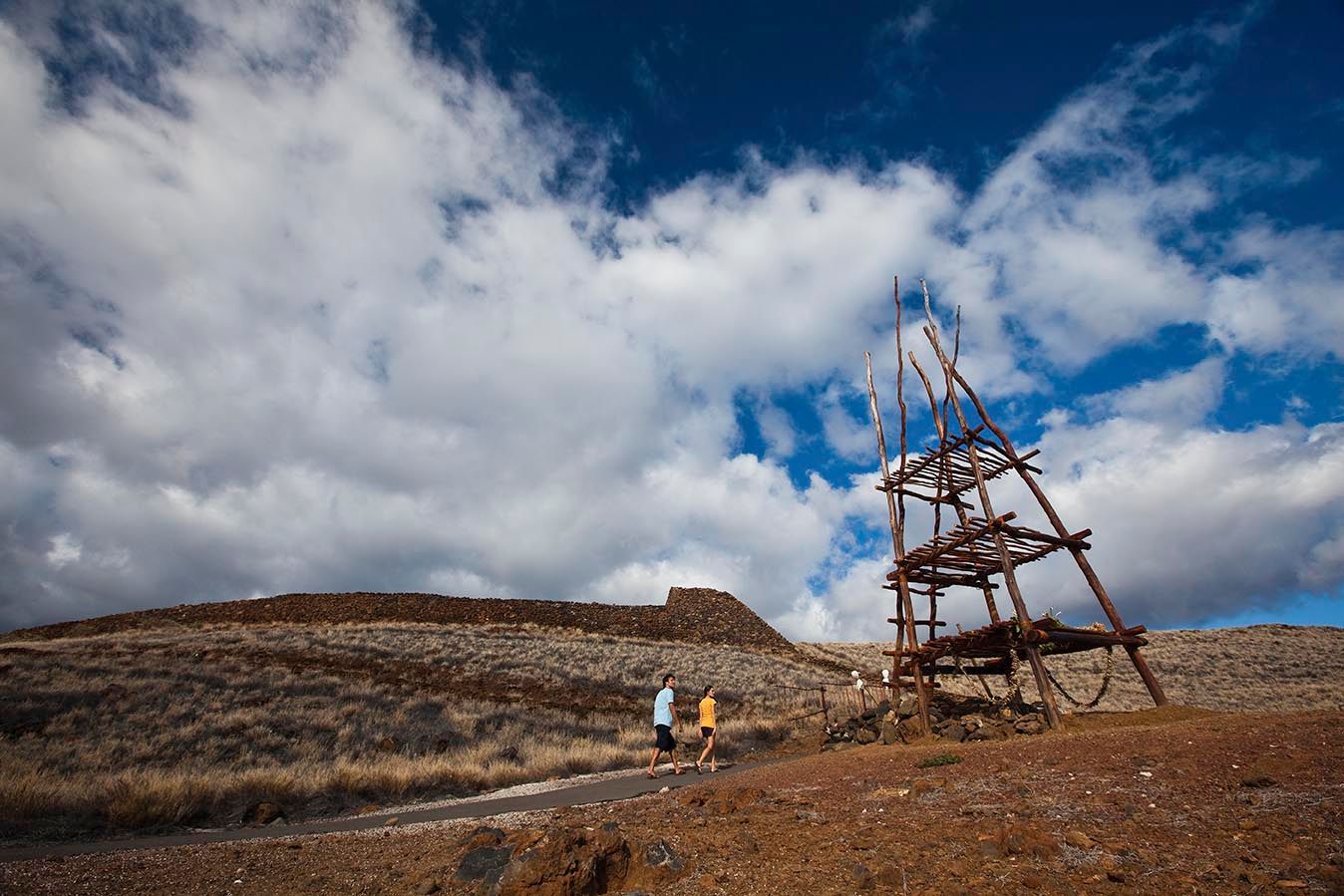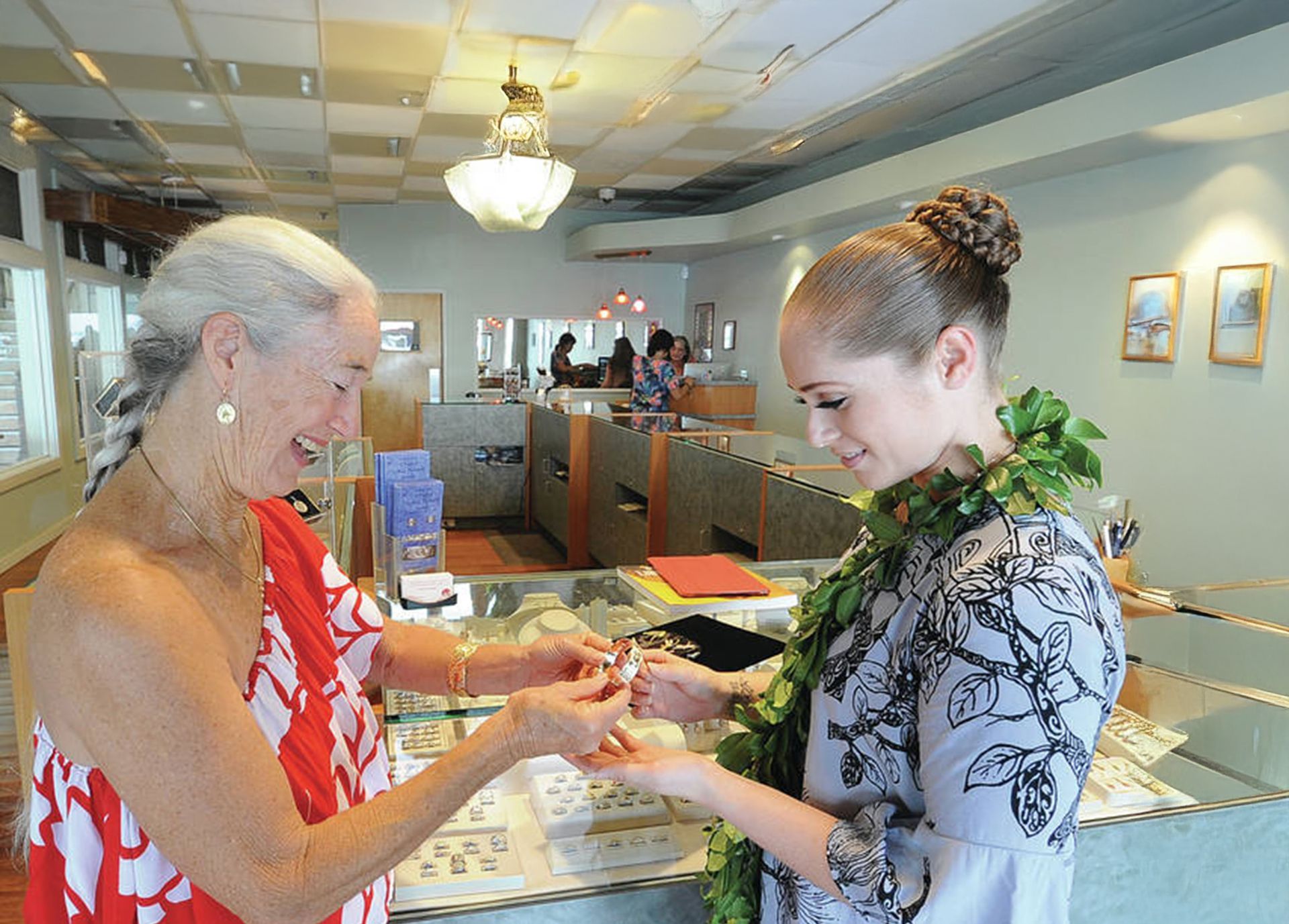National Parks of Hawaiʻi – Discover the Breathtaking Natural Treasures of the Aloha State
To us, Hawaiʻi is more than just a tropical paradise—it's a living museum of nature, culture, history, and our home. The National Parks of Hawaiʻi preserve some of the most extraordinary landscapes and ecosystems on Earth.
From fiery volcanoes to sacred Hawaiian temples, these parks offer visitors a rare blend of adventure and insight into the island's indigenous roots. These protected areas help conserve not only nature's splendor but also Hawaiʻi's rich cultural traditions and stories that have shaped generations.
Overview of Hawaiʻi's National Park System
The National Park Service (NPS) manages a diverse range of federally protected areas across Hawaiʻi. The state boasts two official national parks—Hawai'i Volcanoes and Haleakalā—as well as multiple historical parks and national historic sites. Each park provides a unique glimpse into the archipelago's ecological diversity and historical significance.
Preservation efforts involve federal, local, and native Hawaiian organizations working together to ensure these sacred and natural sites remain untouched for future generations.
Hawai'i Volcanoes National Park (Big Island)

Best Time to Visit Hawai'i Volcanoes National Park
If you're looking for the best mix of ideal weather and manageable crowds, we recommend visiting from April to early June or from September to October.
While spring and fall offer the best mix of weather and manageable crowds, mid-June through the end of August is still during the dry season, which provides fewer disruptions from rain for hiking and sightseeing.
The crowds will be larger during the summer, but the hassle of crowds is offset by the clear skies, which offer the best conditions for scenic views from the crater rim, stargazing, and photography of sunrise and sunset.
Getting to Hawai'i Volcanoes National Park
From Kona Airport to Hawai'i Volcanoes National Park is approximately 95 miles, a two-and-a-half-hour drive.
- Exit Kona International Airport and head south on Queen Ka'ahumanu Highway (HI-19).
- Continue to Kailua-Kona, then take Highway 11 (Mamalahoa Highway) heading south.
- Drive through Captain Cook, Ocean View, and Na'alehu.
- Follow Highway 11 east until you reach the park entrance just past Volcano Village.
Hawai'i Volcanoes National Park Hours, Fees, and Reservations
The park is open 24/7. The Kīlauea Visitor Center is open daily from 9:00 a.m. to 5:00 p.m. You don't need reservations except for ranger-led programs and tours. There is an entrance fee with rates dependent on how you enter the park:
- Private Vehicle: $30
- Motorcycle: $25
- Individual (on foot or bicycle): $15
- Hawai'i Tri-Park Annual Pass: $55
- Valid at Hawai'i Volcanoes, Haleakalā, and Puʻuhonua o Hōnaunau National Historical Parks
You can pay the fee at the entrance or online via Recreation.gov.
How Much Time Should You Spend at Hawai'i Volcanoes National Park
You can experience the splendor of this park on a day trip, driving through the park and stopping at viewpoints to capture its beauty. To truly appreciate this fantastic park, we suggest spending three days hiking the trails and camping to view the spectacular night skies.
Hawai‘i Volcanoes National Park: History and Cultural Significance
This park is more than a geological wonder—it’s a sacred cultural landscape. For Native Hawaiians, the land is the domain of Pelehonuamea, the volcano goddess who is said to have created the Hawaiian Islands. The summit of Kīlauea, Halemaʻumaʻu crater, is a revered site where offerings (ho‘okupu) of flowers, food, and chants are traditionally given to honor Pele. Throughout the park, you’ll find remnants of ancient trails, agricultural terraces, and coastal fishing shrines that tell the story of generations who lived in harmony with the volcanic land.
The park’s modern history began with the establishment of the Hawaiian Volcano Observatory in 1912, followed by its designation as a national park in 1916. Today, it’s both a UNESCO World Heritage Site and a World Biosphere Reserve, recognized for its unique natural processes and cultural heritage. Visitors are encouraged to explore respectfully, stay on marked trails, and honor the sacredness of the land.
Learn More about Hawai'i Volcanoes National Park
Haleakalā National Park (Maui)
When is the Best Time to Visit Haleakalā National Park
From April to October, the dry season is generally considered the best time to visit. The weather is warm, with drier conditions and clearer skies, offering great sunrise photo opportunities and stunning stargazing at night. Hiking trails in the Summit and Kīpahulu districts are more accessible.
If your travel plans are flexible, we would highly recommend visiting Haleakalā National Park from September to early November. You will find the ideal balance of great weather and smaller crowds after summer break when visitors have left.
How do I Get to Haleakalā National Park
From Kahului Airport, it is a 38-mile or 1.5-hour drive to the summit district and a 65-mile or 2.5-hour drive to Kīpahulu District via the Hāna Highway.
Driving to the Summit District (the most popular area for sunrise and hiking):
- Exit Kahului Airport (OGG) and head east on Hāna Highway (HI-36).
- Turn right onto Haleakalā Highway (Hawaii Route 37).
- Continue on HI-37 through Pukalani, then take a left onto Crater Road (HI-378).
- Follow Crater Road to the Haleakalā Visitor Center and Summit (elevation: ~10,000 feet).
Driving to the Kīpahulu District (coastal area with waterfalls and bamboo forests):
- From Kahului, take the Hāna Highway (HI-360) east.
- Pass through the town of Hāna and continue for ~10 more miles to reach the Kīpahulu entrance.
Haleakalā National Park Hours, Fees, and Reservations
The park is open 24 hours a day and features two visitor centers. The Haleakalā Visitor Center in the Summit District is open daily from 9:00 a.m. to 3:00 p.m., and the Kīpahulu Visitor Center is usually open from 9:00 a.m. to 4:30 p.m., but hours may vary.
Reservations are required for sunrise viewing at the Summit and for camping at Hosmer Grove Campground, as well as for backcountry cabins or sites.
Entrance Fees (valid for three consecutive days and includes both park districts)
- Private Vehicle: $30
- Motorcycle: $25
- Individual (on foot or bicycle): $15
- Hawai'i Tri-Park Annual Pass: $55
- Grants access to Haleakalā, Hawai'i Volcanoes, and Puʻuhonua o Hōnaunau National Historical Parks
- America the Beautiful Pass also accepted
Pay at the entrance station or online via Recreation.gov.
How Much Time Should I Spend at Haleakalā National Park
If you just want to visit the Summit for sunrise or sunset, we recommend allowing 3–5 hours. Day hiking in either district is also an option; however, it would be a long 12-hour day to hike in both districts. To truly experience the entire park, we recommend allocating 2-3 days in your vacation schedule.
Haleakalā National Park: History and Cultural Significance
Haleakalā, meaning “House of the Sun” in Hawaiian, is a place of deep cultural resonance and natural beauty. In Hawaiian legend, the demigod Māui climbed to the summit to lasso the sun, slowing its journey across the sky to give his mother’s crops more time to grow. The park’s volcanic summit and lush Kīpahulu coastline have been home to Native Hawaiian communities for centuries, with evidence of ancient trails, taro patches, and sacred sites still visible today.
Haleakalā became part of the original Hawai‘i National Park in 1916 alongside Kīlauea but was designated as its own park in 1961. The summit area offers a window into the island’s volcanic origins, while the Kīpahulu District preserves cultural landscapes and rare native ecosystems. Visitors are encouraged to experience its beauty with respect, whether witnessing sunrise above the clouds, hiking crater trails, or exploring the cultural heritage of East Maui.
Learn More about Haleakalā National Park
- https://www.thisweekhawaii.com/plan-your-visit-to-haleakala-national-park-full-guide
- https://www.thisweekhawaii.com/listing/haleakala-national-park
- https://www.nps.gov/hale/index.htm
Kalaupapa National Historical Park (Molokaʻi)

Kalaupapa National Historical Park on the island of Molokaʻi is a very unique historical site. When leprosy was introduced to the Hawaiian Islands, King Kamehameha V turned the Kalaupapa Peninsula on the north shore of Molokaʻi into a leper colony and banished anyone with the disease to the peninsula.
People with leprosy no longer need to be isolated, and today, the peninsula is still home to many of the descendants of the people who were banished.
The residents of the island have requested that visitors be limited to 100 a day, and this can only be done with a special permit and through a guided tour.
Learn More about Kalaupapa National Historical Park
Puʻuhonua o Hōnaunau National Historical Park (Big Island)
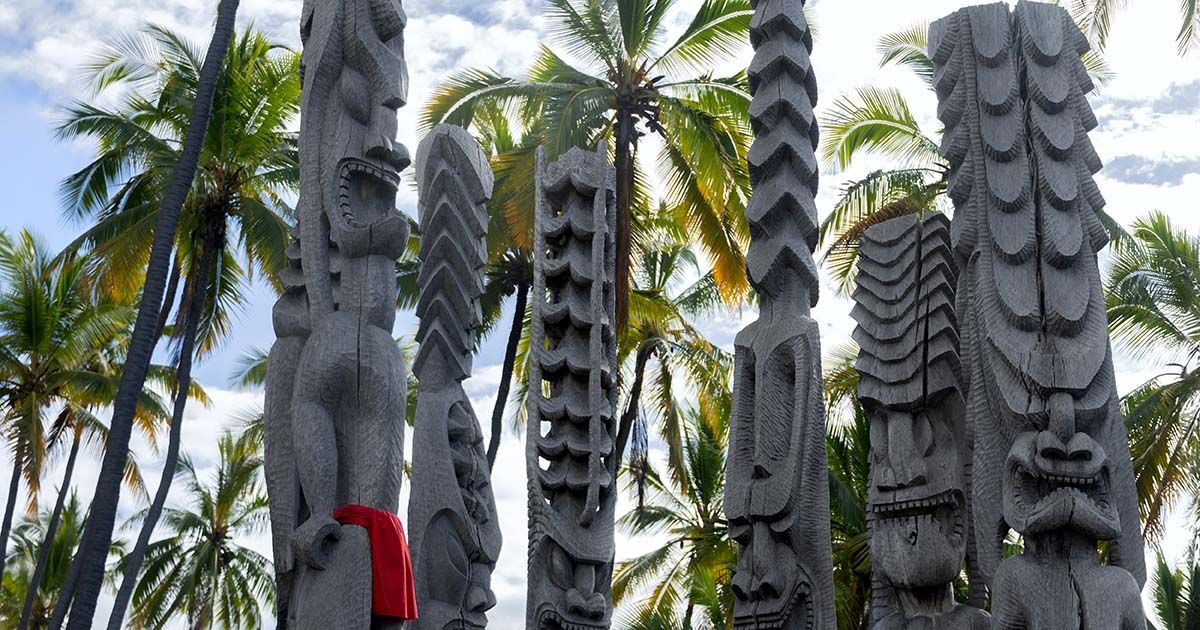
When is the Best Time to Visit Puʻuhonua o Hōnaunau National Historical Park
The park is located on the Kona coast, which is the drier part of the Island of Hawaiʻi; this makes visiting the park pleasant throughout the year. If you are visiting from November through March, you will find the temperatures to be slightly cooler than the rest of the year.
How to Get to Puʻuhonua o Hōnaunau National Historical Park
From Kona International Airport, Hōnaunau National Park is a 25-mile drive, taking approximately 40 minutes.
- From Kona International Airport (KOA), head south on Queen Kaʻahumanu Highway (HI-19).
- Merge onto Highway 11 (Mamalahoa Highway), heading south toward Kealakekua and Hōnaunau.
- After passing Kealakekua and Captain Cook, turn right onto Hōnaunau Beach Road (Route 160)—look for signs directing you to the park.
- Follow this road downhill to the Puʻuhonua o Hōnaunau National Historical Park entrance.
Puʻuhonua o Hōnaunau National Historical Park Hours, Fees and Reservations
The park is open daily from 8:15 a.m. to sunset. You don't need reservations, but there is a $10-$20 entry fee, which is valid for 7 days.
How Much Time is Needed at Puʻuhonua o Hōnaunau National Historical Park
Visiting the park is an excellent option for a morning or afternoon excursion. We recommend setting aside two to three hours at the most to get the most out of this historic park.
Puʻuhonua o Hōnaunau National Historical Park: History and Cultural Significance
Puʻuhonua o Hōnaunau, meaning “Place of Refuge at Hōnaunau,” is one of the most significant cultural sites in Hawaii. In ancient times, breaking kapu (sacred laws) was punishable by death—unless the offender could reach a designated puʻuhonua. Here, they could be absolved by priests and given a second chance at life. The site also sheltered defeated warriors, noncombatants during times of war, and others seeking sanctuary.
The park preserves heiau (temples), royal fishponds, and coastal lava rock pathways that paint a vivid picture of traditional Hawaiian life. Wooden ki‘i (carved statues) stand guard, symbolizing the spiritual protection of the gods. Today, Puʻuhonua o Hōnaunau is both a place to learn about Hawaii’s social structure and a space where Native Hawaiian culture is honored and practiced. Visitors are encouraged to move with respect, speak softly, and treat the grounds as the sacred refuge it has always been.
Learn More about Puʻuhonua o Hōnaunau National Historical Park
Kaloko-Honokōhau National Historical Park (Big Island)
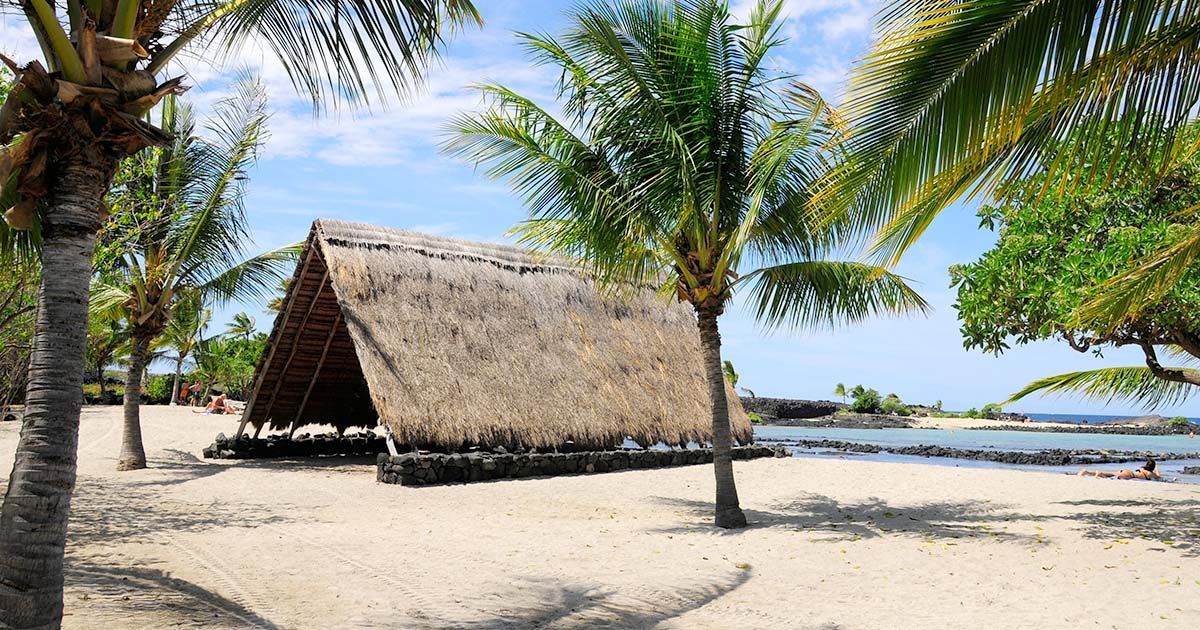
When is the Best Time to Visit Kaloko-Honokōhau National Historical Park
Much like Puʻuhonua o Hōnaunau National Historical Park, Kaloko-Honokōhau is situated in Kailua-Kona, one of the driest regions on the Big Island, visiting the park a year-round pleasure. If you're looking for cooler temperatures, consider visiting from November to March.
How to Get to Kaloko-Honokōhau National Historical Park
Reaching the park from Kona International Airport is a short 6-mile drive, making it a convenient 10-minute trip.
- Exit Kona International Airport and head south on Queen Kaʻahumanu Highway (HI-19) toward Kailua-Kona.
- After about 6 miles, turn right at Kealakehe Parkway.
- Immediately turn left onto Ala Kahakai (also known as Kaloko Road or Honokōhau Boat Harbor Road).
- Follow signs to the Kaloko-Honokōhau National Historical Park Visitor Center or to Honokōhau Boat Harbor, where trailheads into the park are also located.
Kaloko-Honokōhau National Historical Park Hours, Fees and Reservations
Kaloko-Honokohua National Historical Park is open to the public, and reservations are not required. The park and Hale Ho'okipa Visitor Contact Station are open daily from 8:30 a.m. to 4:00 p.m. The trails are technically open from sunrise to sunset.
How Much Time Is Needed to Visit Kaloko-Honokōhau National Historical Park
To soak in history and walk the trails, we recommend setting aside 2–3 hours, but you can easily spend the whole day enjoying the park if you have the time.
Kaloko-Honokōhau National Historical Park: History and Cultural Significance
Kaloko-Honokōhau tells the story of a thriving Native Hawaiian coastal community that lived in harmony with the land and sea. This area was once a center of aquaculture and fishing innovation, featuring massive stone-walled fishponds (loko i‘a) that sustained the community. Ancient petroglyphs carved into lava rock record cultural expressions, stories, and spiritual beliefs passed down through generations.
The park is also home to sacred heiau, house sites, and trails that connect inland and coastal areas. It embodies the Hawaiian value of ahupua‘a—a land division system that integrated mountain, plain, and ocean resources to support sustainable living. Today, Kaloko-Honokōhau is both a cultural classroom and a living heritage site. Visitors are encouraged to walk gently, respect wildlife like honu (green sea turtles) resting on the shore, and take time to learn about the traditions that continue to influence Hawaiian life.
Learn More about Kaloko-Honokōhau National Historical Park
Pearl Harbor National Memorial (Oahu)
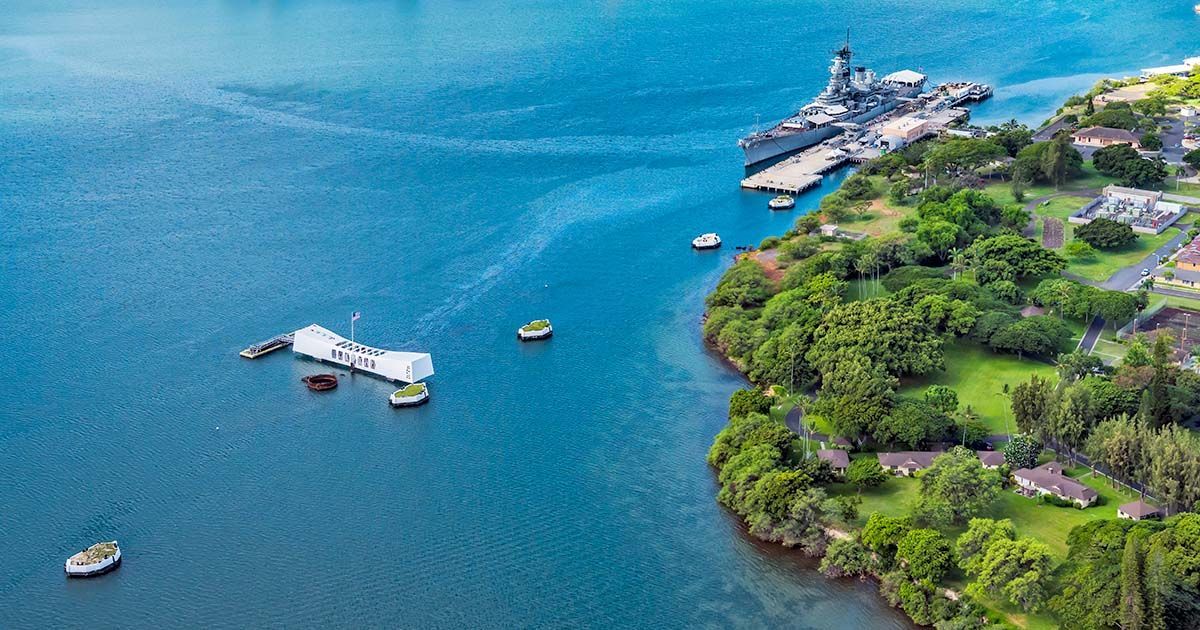
When is the Best Time to Visit Pearl Harbor National Memorial
To experience the best mix of cooler weather and manageable crowds, we recommend visiting the memorial in the spring (April–June) and fall (September–November). As this is a popular tourist attraction, the summer and winter months can see high volumes of visitors, and tickets for the USS Arizona Memorial sell out early.
How to Get to Pearl Harbor National Memorial
Daniel K. Inouye International Airport is a short 5-mile or 10-minute drive. If you are staying in Waikīkī, it is an 11-mile or 25-minute drive. Rideshares, buses, and shuttle services are also available.
Driving Directions from Daniel K. Inouye International Airport:
- Exit the airport and get on Interstate H-1 West.
- Take Exit 15A for Arizona Memorial/Stadium.
- Follow signs for Pearl Harbor Historic Sites.
- Turn left into the Pearl Harbor Visitor Center parking lot (free parking available).
Driving Directions from Waikīkī:
- From Waikīkī, take Ala Wai Blvd or Kalākaua Ave to get onto H-1 West.
- Follow H-1 W for about 10 miles.
- Take Exit 15A toward Arizona Memorial/Stadium.
- Follow signs to the Pearl Harbor Visitor Center. Free parking is available.
Pearl Harbor National Memorial Hours, Fees, and Reservations
The park is free to the public and open daily from 7:00 a.m. to 5:00 p.m. Visiting the USS Arizona Memorial does require a reservation and fee.
Reservations can be made at Recreation.gov – Pearl Harbor
How Much Time Is Needed to Visit Pearl Harbor National Memorial
To fully appreciate the exhibits and soak in the history, we recommend dedicating between 4 and 6 hours. There is a lot to see, so be sure to block off enough time to enjoy the park without feeling rushed.
Learn More about Pearl Harbor National Memorial
- https://www.thisweekhawaii.com/listing/pearl-harbor-historic-sites
- https://www.thisweekhawaii.com/listing/uss-bowfin-submarine-museum-park
FAQs about National Parks of Hawaiʻi
- Do all national parks in Hawaiʻi require an entrance fee?
Not all do. Some historical parks are free to enter, while others, such as Haleakalā and Hawai'i Volcanoes, charge an entry fee. Check individual park pages. - Are the parks accessible for people with disabilities?
Most parks offer ADA-compliant trails, visitor centers, and restrooms, though terrain can be challenging in some areas. - What wildlife should I be aware of?
While Hawaiʻi lacks large predators, always keep a respectful distance from sea turtles, monk seals, and nesting birds. - Which park is best for families?
Haleakalā offers kid-friendly hikes and stargazing, while Puʻuhonua o Hōnaunau has engaging cultural exhibits. - Is the weather predictable in the parks?
Microclimates can cause rapid weather changes, especially near volcanoes or mountains. Bring layers and waterproof gear. - Are guided tours available?
Yes, many parks offer ranger-led programs and third-party guided tours to enhance your visit.
Why the National Parks of Hawaiʻi Are a Must-Visit
The National Parks of Hawaiʻi are more than tourist spots—they are sacred grounds, vibrant ecosystems, and living classrooms. Whether you're witnessing a fiery volcano at Kīlauea, embracing the tranquility of Haleakalā's Summit, or exploring the cultural depth of Kalaupapa, these parks leave an indelible mark.
Respectful exploration of Hawaiʻi's national treasures not only deepens your connection to nature but also supports the preservation of unique cultures and histories.

